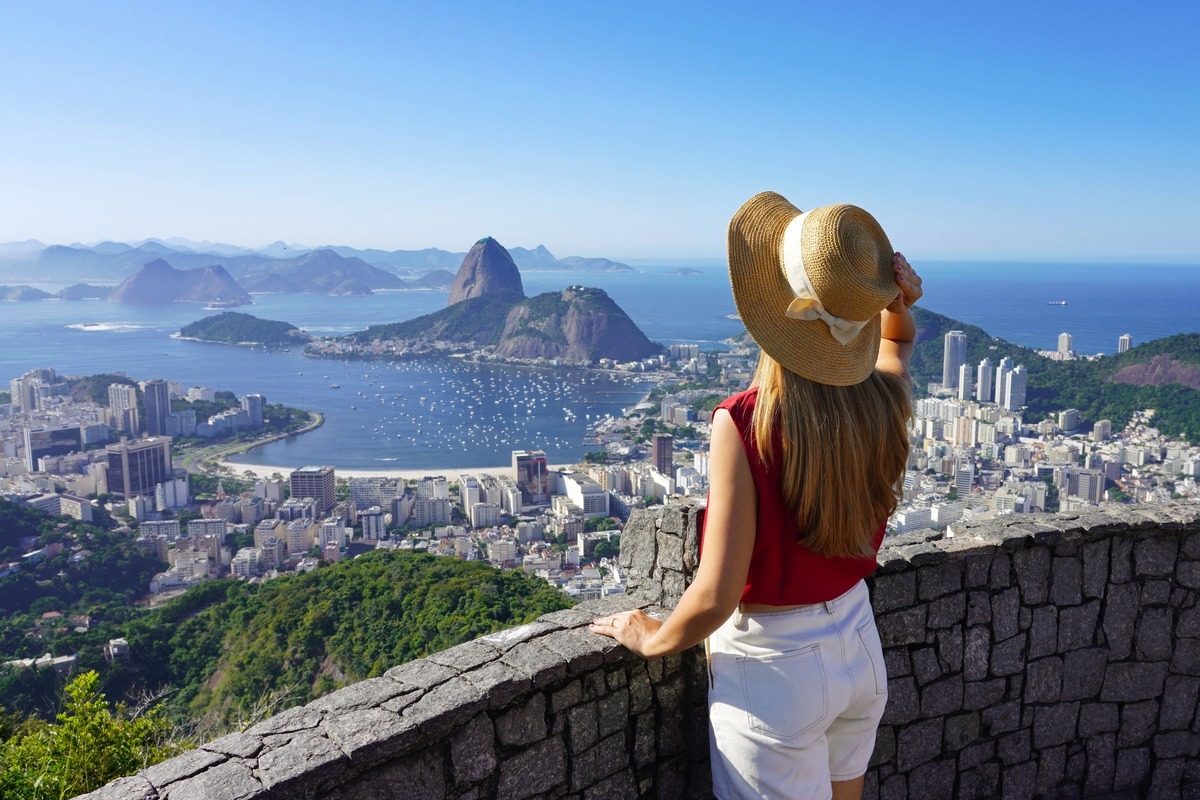[ad_1]
Last Updated
Home to an abundant nature, a vibrant culture, and warm, welcoming people, South America has been one of the top destinations for Americans this year.
Throughout 2023, several countries on the continent registered a record increase in bookings as a result of loosened entry rules, attractive prices, and improved flight connectivity following the end of the health crisis.

Though the ongoing spike in arrival figures is unlikely to slow down anytime soon, there are four very important updates U.S. travelers heading South early next year should be aware of: some spell great news, others not so much.
We will start with the cheery stuff, but you want to make sure you read until the very end, or you may be in for an unpleasant surprise in the future.
Buenos Aires Is The Cheapest And Safest Capital Of South America
If you are planning a trip to Buenos Aires, the charming capital of Argentina and South America’s most prominent foodie hotspot, you are in for a treat.

Famous for its European-inspired architecture, wide boulevards, grand parks, and award-winning restaurants, BA (in the short form) has already been a source of fascination for decades, but it’s truly surged in popularity this year for two reasons.
It is one of the cheapest city breaks for Americans going abroad due to both the ‘tourist dollar’ scheme, which effectively doubles the value of your money when buying pesos in Argentina, compared to the official rate applicable to overseas purchases, and the low consumer prices.
According to BudgetYourTrip, a two-week trip to Buenos Aires can cost as cheap as $354 if you’re going on a budget.

Then, there is the citywide lower risks for robbing, scamming, and urban violence in general: other than being mesmerized by tango street performers and finding out empanadas are their new favorite snack, visitors feel very safe walking the streets in downtown BA.
The same cannot be said of a majority of South American capitals, especially when Argentina has the distinction of being only one of a handful of countries in the region to currently enjoy Level 1 status, as defined by the U.S. State Department.
This means it can be on par with the likes of Iceland, Finland, and Norway in terms of safety, and this brings us to point number two.

Colombia Is Getting More Dangerous To Visit… Again
Contrastingly, Colombia has been slapped with yet another Level 3 warning by the same entity, meaning it is not a low-risk destination, and Americans should even ‘reconsider’ travel.
Since the nineties, the South American gem has made great strides in increasing safety in its cities and tackling its gang-related problems, but it is still miles behind other states in the region in terms of safety.
This year, numerous tourists have reported being victims of violence when traveling in Colombia, and Medellin is once again on track to become the crime capital of the continent.
And U.S. nationals are particularly concerned as they are perceived to have money and make for easy targets.

If you are visiting Colombia in 2024, you should ensure you maintain a high level of situational awareness, avoid walking alone late at night, including in touristy neighborhoods, and leave valuable items at your hotel, preferably in a safe.
Learn more about common crimes affecting tourists in Colombia and how you can reduce your risks of being affected here.
Machu Picchu Will Allow More Tourists To Visit Every Day
On a happier note, more tourists will now be allowed to visit the UNESCO World Heritage Site and Wonder of the World that is Machu Picchu.

One of the most popular tourist attractions for country-hoppers in South America, it offers an iconic postcard-ready view, with well-preserved terraces and ruined yet impressive pre-Columbian dwellings resting high on a mountain in the Peruvian highlands.
If you’re lucky enough, you may get to feed an alpaca and try the local pisco drink, which is supposed to help you with altitude sickness, and the best thing is you will no longer have to fight as hard for a spot on a guided tour or plan your visit far in advance.
In the past, Machu Picchu hosted a maximum of 3,800 visitors per day, and not all were fortunate enough to get tickets on time.

From January 1, however, the Ministry of Culture, responsible for overseeing visits to Machu Picchu, will be allowing as many as 4,500 guests daily, and as high as 5,600 on busier days, helping accommodate more tourists and ensuring no one misses out on this World Wonder.
Visas For Brazil. For Americans.
Perhaps the most serious update on this list, Brazil’s latest reshuffle of entry rules is something you don’t want to read inattentively – if you are American.
As we reported a few months ago, the largest country in South America is bringing back visa restrictions for U.S. passport holders in a tit-for-tat move that’s been interpreted as a response to America’s own harsh visa policies applied to Brazilians.

As promised, the visa will be digital, but something we did not know at the time was that the application process very much resembles a typical visa procedure, which is burdensome as you are about to learn.
No, you will not have to travel to the nearest Brazilian Consulate to apply for an entry permit and an interview, you can submit your information from the comfort of your home right here.
You will, however, be expected to upload an exhaustive list of documents:
- The completed application form itself
- The relevant data on your passport
- A colored digital passport-style photo*
- Confirmation of outbound and return flights
- Bank statements for the last 30 days showing a balance of at least $2,000 for travel

*Passport photos are typically taken on a white background, and the face of the individual must be fully visible. When wearing glasses, they must ensure there is no light reflection. More information can be found in the application form.
Application will cost $80.90, and the application platform is run by VFS Global.
It is live now, and you can already make your application if you are due to arrive to Brazil after January 10 and you hold a U.S., Canada, or Australian passport.
European, British, New Zealand, Japanese, and most foreign nationals do not need visas for Brazil, as Brazilians can travel to those countries and territories visa-free.
Having obtained a visa, Americans will be allowed to travel to Brazil on a single visa for 10 years.

This means you can enter Brazil for up to 90 days on different trips within the next decade after getting a visa approval.
Meanwhile, Canadians and Australians will be granted a five-year visa upon approval.
Traveling to South America soon and not sure how to go about planning your multi-country adventure? Start by getting inspired here.
Read More:
Top 5 Travel Insurance Plans Starting At $10 Per Week
How To Easily Earn Points For Free Travel
↓ Join Our Community ↓
The Out Of Town Blogs Community FB group has all the latest reopening news, conversations, and Q&A’s happening daily!

SUBSCRIBE TO OUR LATEST POSTS
Enter your email address to subscribe to Out Of Town Blogs’s latest breaking travel news, straight to your inbox.
This article originally appeared on outoftownblogs.com
Opinions expressed here are the author’s alone, not those of any bank, credit card issuer, hotel, airline, or other entity. This content has not been reviewed, approved or otherwise endorsed by any of the entities included within the post.
[ad_2]
